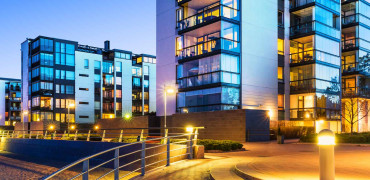As we enter the new year I thought it was worth reflecting on the outcomes of COP26, what that means for the next 28 years up to 2050, and what I’d love to see happening in 2022.
Let’s start with COP26.
Some would see the Global Climate Conference as a success, while others would see it as a failure.
The simple truth is that there were some significant pledges by the global nations to try to minimise climate change, which should be celebrated, but those pledges didn’t go far enough to prevent global temperatures rising about 1.5 degrees Celsius, which is what scientists believe needs to happen to avoid a ‘climate catastrophe’.
The pledges made, if they are even met, will only limit rising temperatures to around 2.4 degrees, which means we are screwed.
If COP26 was seen as the biggest opportunity in a generation to take the steps to avoid a global climate catastrophe then, assuming the numbers and the science are correct, it failed…miserably.
Maybe I’m being naive or putting this into an over-simplistic way, or maybe I’m even being overly dramatic, but if we didn’t take the steps needed to save our very existence on the planet then the conference completely missed a great opportunity to do the right thing and avoid the inevitable.
No wonder Alok Sharma, the President of COP26, fought back the tears when he said he was “deeply sorry” for the shortcomings of the conference. He later tried to brush the tears away by stating they were “a manifestation of effort and not emotion” but I don’t buy that. I’m sure he cried because it was both. Deep down he knows the conference didn’t go anywhere near far enough.
All this talk of 'green homes' is just hot air and as we all know, hot air is the last thing the planet needs right now
Phase down or phase out?
So, what were the things to celebrate?
Well, the biggest headline grabber, and the most controversial that brought Sharma to tears, was that although for the first time at a COP conference a pledge was made to reduce the amount of coal burnt in the world (coal is responsible for 40% of global carbon emissions) the wording in the final ‘Glasgow Climate Pact’ was changed to saying there would be a ‘phase down’ in the use of coal rather than a ‘phase out’.
This came after a last-minute intervention by China and India. They couldn’t bring themselves to commit to ‘phase out’.
Interventions like this come about because of economic self-interest, which in some ways is understandable, but I thought the purpose of COP26 was for every country on the planet to come together to support each other economically while at the same time saving the planet.
Again, maybe I’m wrong. I thought this was one of the reasons the ‘Paris Rulebook’ was set up.
Having signed up to the Paris Agreement in 2015 there was no clear framework in that agreement how commitments would be achieved and how countries would be held to account.
Glasgow hoped to rectify this and thankfully it did. The rulebook was completed and a key part of the negotiation was the Article 6 provision under the Paris Agreement.
This allows countries to trade ‘carbon credits’ to allow countries that find it too difficult or expensive to reduce their carbon emissions to pay other countries to do these emissions on their behalf.
With this mechanism of support in place surely China and India could commit to the ‘Phasing Out’ of coal. Maybe they just don’t want to pay.
We just didn’t do it
A flurry of other announcements were made, which I’ll try to summarise.
(It is definitely worth remembering at this point that absolutely nothing in the Paris Agreement or in the Glasgow Climate Pact is legally binding. None of it.
For me this is beyond any shadow of doubt the biggest flaw in the entire process. If the planet is our collective home and it is in serious trouble then make the critical steps to save it legally binding! But, we haven’t.
The agreement pledged a significant increase in funds to help poorer countries in their fight against climate change. Although, it is worth mentioning that a previous commitment by richer countries to give £100bn by 2020 was completely missed.
Why? I have no idea. We just didn’t do it.
COP26 in summary
All countries committed to phasing out subsidies that artificially reduce the price of fossil fuels. Great news, but no dates or deadlines were set for this. Very odd.
A US-China agreement was signed for the two biggest powers to cooperate more closely on moving towards clean, green energy.
Again, great stuff, but shouldn’t we all be doing this anyway?
Global leaders from more than 100 countries, that have around 85% of the trees on earth, agreed to stop deforestation by 2030. If this actually happens it will be quite amazing.
An initiative to cut methane emissions by 30% by 2030 was agreed by more than 100 countries. But, Russia, China and India didn’t sign up for this, which is beyond unfortunate.
Follow the money
One massive step is that global financial institutions, controlling $130tn, agreed to invest in clean technology.
How much of that they choose to invest is too early to call, but the fact that big business see green technology as being a lucrative investment is very good news.
This may seem obvious to all of us within green industries, but to have this agreed is good news indeed.
So that summarises, in very headline terms, the successes and failures of COP26. I can honestly say that I share Alok Sharma’s tears.
And into the future
So what do I hope for in 2022?
Well, I live in hope for many things when it comes to the global environment and for the innovation of clean and green architecture across the planet.
I also live in hope for many things on our own shores, such as the end of homelessness, which I’ve prayed for, for years.
But, if there is one New Year wish I could make for 2022 to the British Government is for them to come up with a GREEN RETROFIT DEAL that actually works to make all existing UK homes as low-carbon and as environmentally friendly as possible.
There are around 25 million existing homes in the UK and, as you might imagine with so much old housing stock, the vast majority of these homes are environmentally poor.
The government has taken steps over the last couple of years to make New-Build Housing more green, such as banning fossil fuels boilers by 2025 to make way for cleaner and greener home heating technology such as installing Air Source Heat Pumps rather than gas boilers.
Steps like this will make a difference, but new build housing only accounts for 1% of all housing stock per year. Around 250,000 new build homes are currently being built per year.
It is the 25 million existing homes we need to worry about if we have any chance of being zero-carbon in the UK by 2050.
We currently have no initiative in the UK to make our current housing stock clean and green and with so much ‘green talk’ coming from number 10 at the moment, to not have any UK HOME RETROFIT COMMITMENT in place, makes all of that talk hot air and as we all know, hot air is the last thing the planet needs right now.
George Clarke is an Architect, writer, TV presenter and Ecodan Ambassador


